Pit 29: Level 3
Completed on November 23, 2012 by Dean Hunt, Fred Morrison, Odess, Jeremy, and David Brinkman. Like other nearby pits, level 3 was loaded with artifacts. It seems each pit has something special about it. This was pipe stems in pit 29. Dean ended up finding 2, Odess 1, David 1, and David found our best and largest piece of pipe bowl. It was decorated and appears to have an alligator or crocodile on it. At about 4PM David, Fred, and Dean left the dig site to survey a possible future project. The survey was a bit of an adventure in itself and Dean and David were happy to come out dry with only a few scratches. We will provide more information on this possible project as it develops. When we arrived back at the dig site, we had visits from Joe Long (Confederate Relic Museum) and neighbor Susan Rathbun-Grubb who has been following our dig since the beginning. Dean and Fred had to leave early and Odess and David finished the pit with Odess finding the 4th pipe stem in the last shovel of dirt. We could have gone a little deeper but it was getting dark. David and Jeremy filled the hole. Overall, pit 29 was another good pit but did not quite break into the top ten. All levels totaled, it had 53 pieces of pottery, 46 pieces of glass, 14 nails, 6 other iron pieces, 5 pipe pieces, and 2 pieces of Native American pottery.
Pit 29: Level 3 produced: 37 pieces of pottery, 35 pieces of glass, 10 nails, 5 other iron pieces, 3 pipe stems, a decorated pipe bowl, and 2 pieces of Native American pottery.
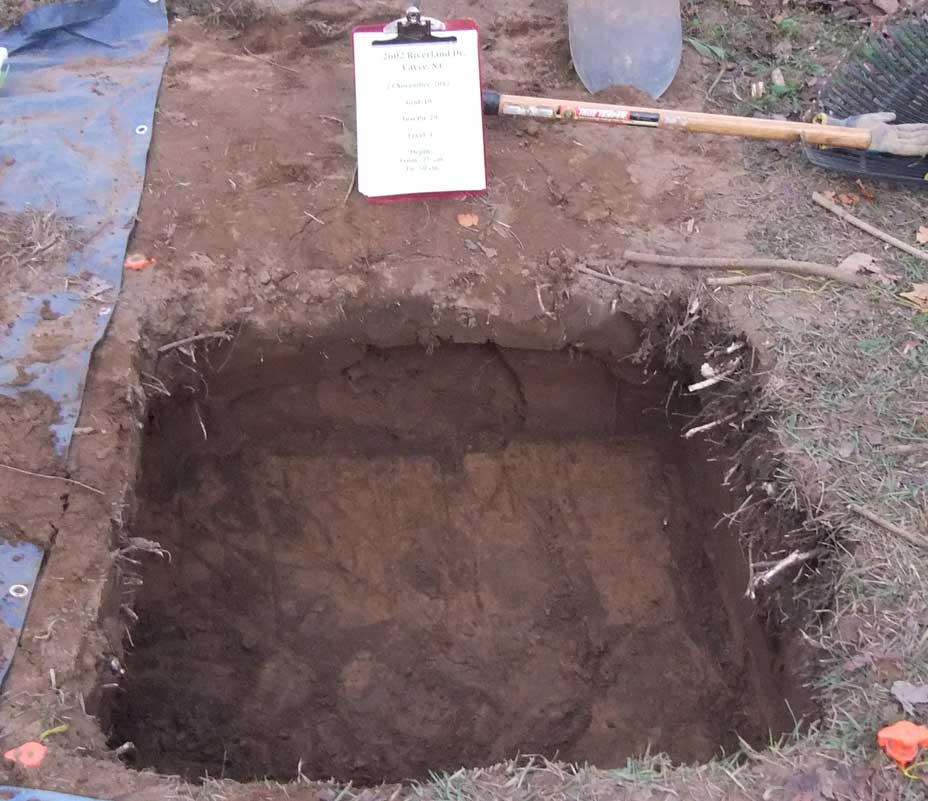
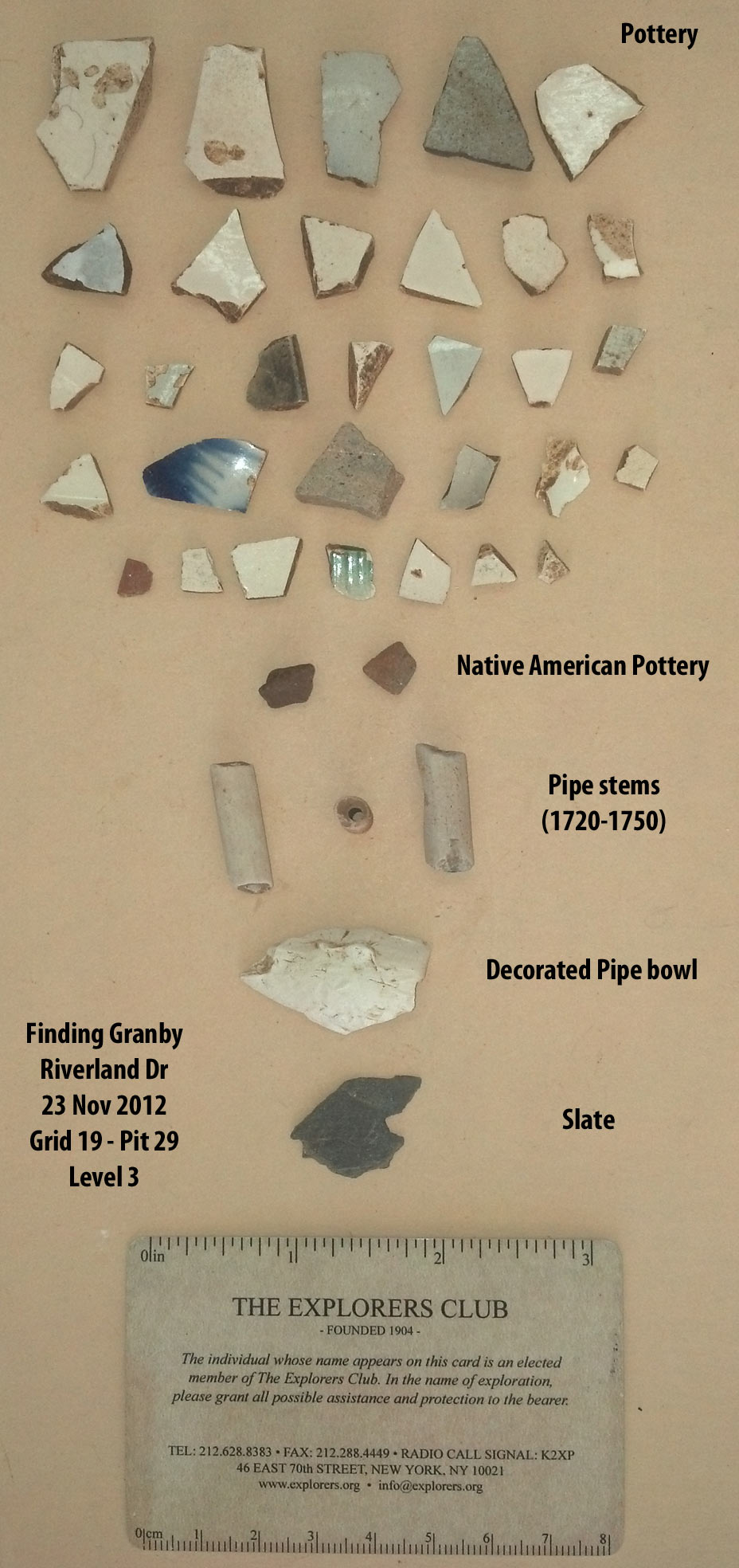
We found a record 4 pipe stems (dated: 1720-1750) in pit 29 and our biggest pipe bowl piece (see picture below). This decorated piece doesn't look like much until you turn it the right way. Sir Walter Raleigh and gator/croc clay pipes were popular in the mid-17th century. "The English were the first to make tobacco a consumer product. Sailor, explorer and writer Sir Walter Raleigh (1554-1618) is considered the one who popularized smoking. Thanks to him, it became fashionable in the court of Queen Elizabeth I, and soon spread to high society throughout Europe. The first commercial operations appeared, initially in Holland, in 1561, and later in Germany. Legend has it that Raleigh fell overboard off the coast of Virginia one day. He was seized by a crocodile, but the animal found the smell of smoke so repugnant that it released him! A series of pipes was produced bearing the likeness of this "hero" sometimes with crocodile included."

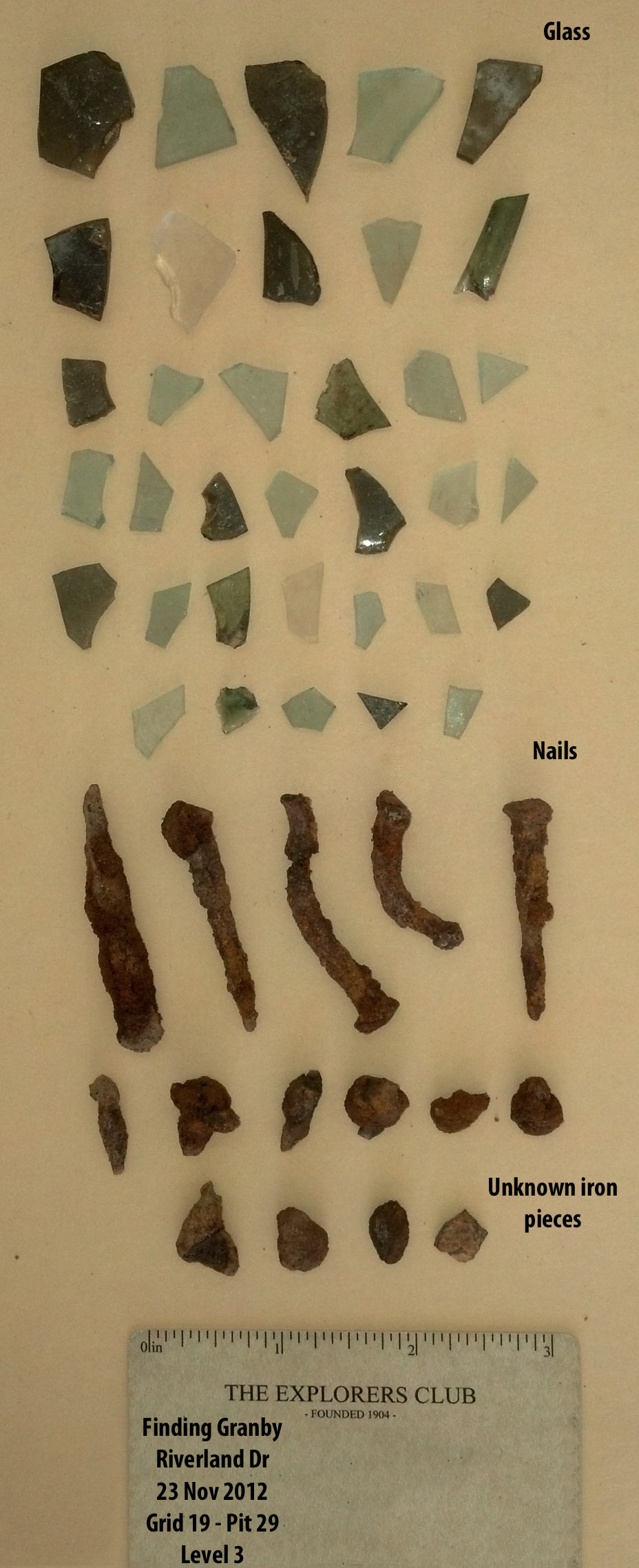
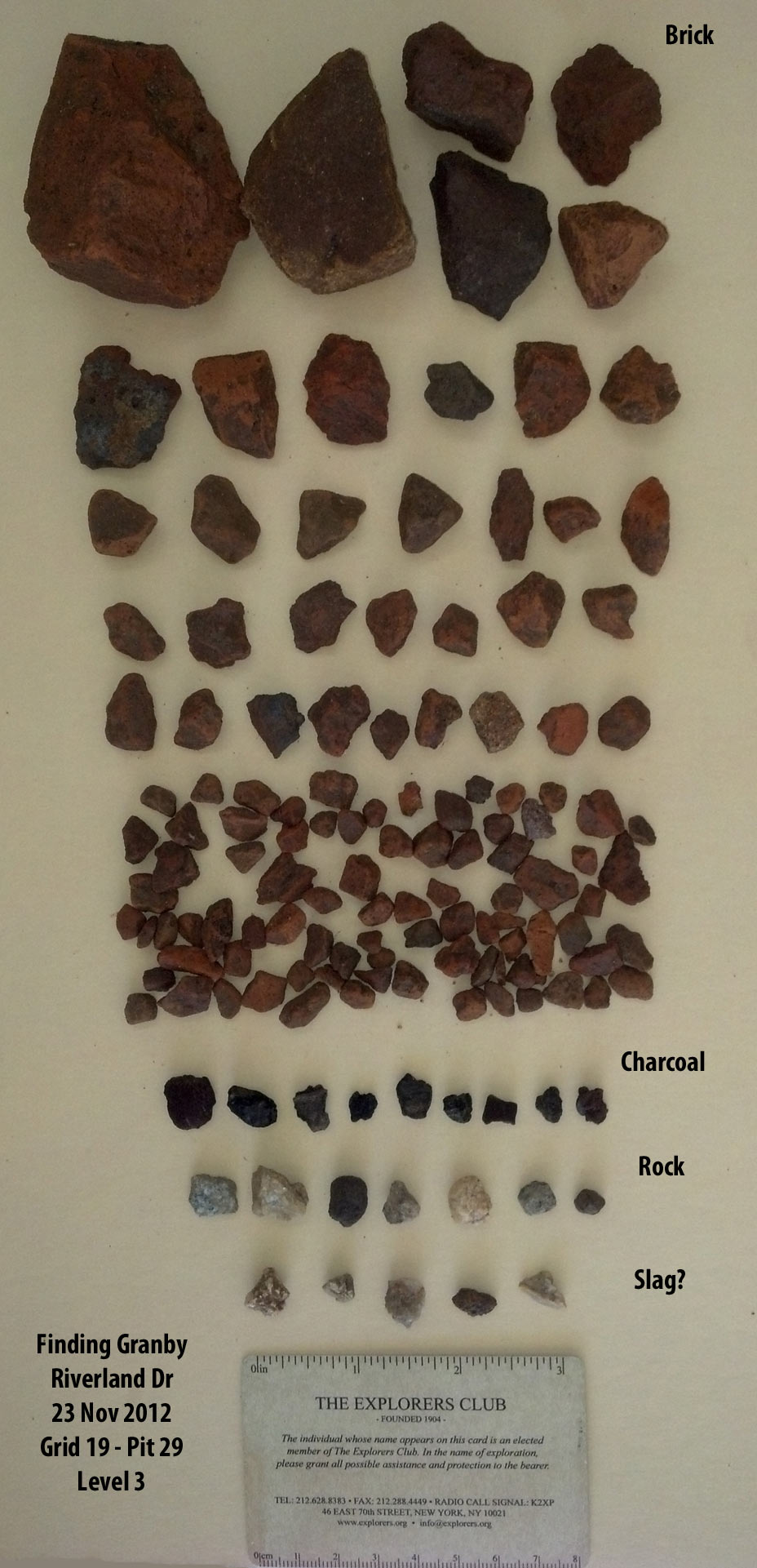
Burned brick fragments are not unusual in the Granby dig. The following (from level 3), however, has strange colors as though something may have melted on its surface.
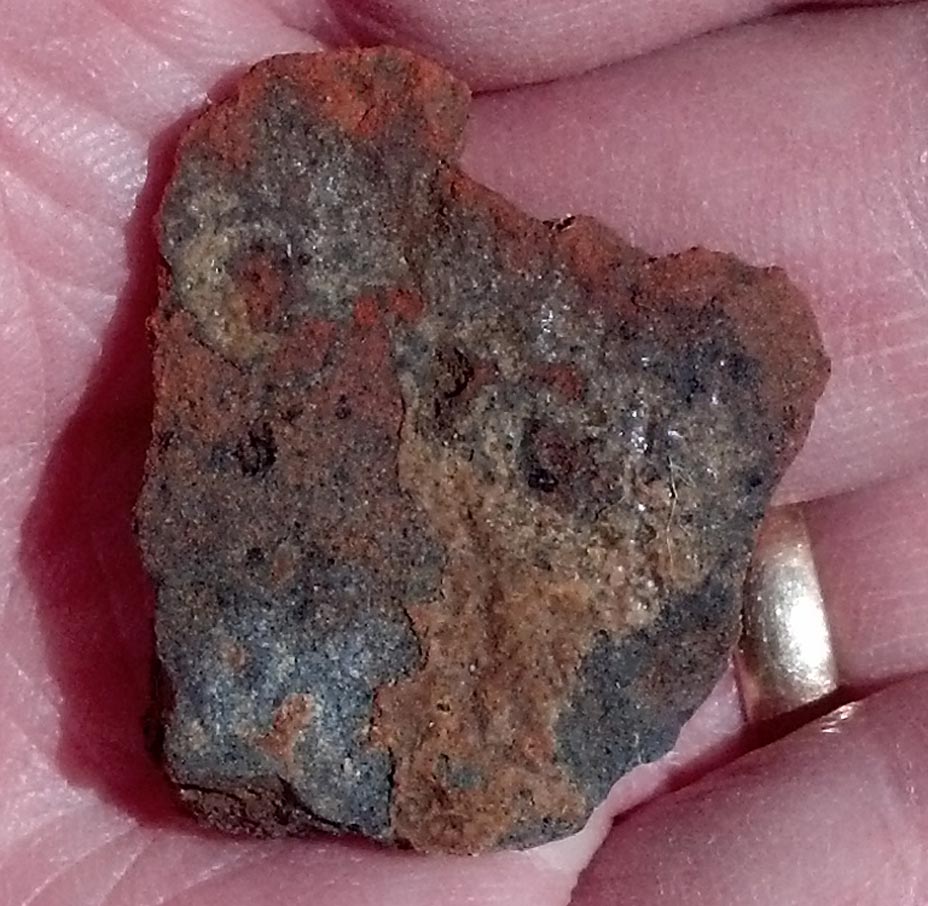
Below, David Brinkman shows clay pipe artifacts (found in pit 29) to Joe Long and Susan Rathbun-Grubb.
